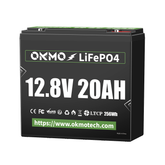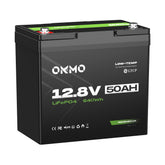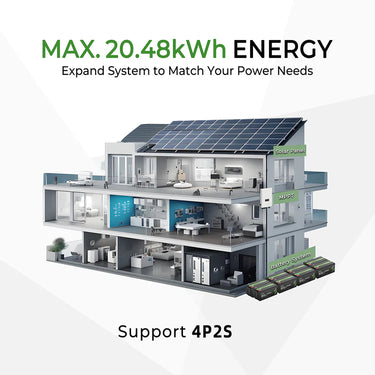Marine Batteries vs. Regular Batteries: Why Boats Require Specialized Power Solutions

The performance of a battery directly impacts the safety and reliability of marine equipment, whether on a ship, yacht, or any watercraft. Many assume that "regular car batteries can work for boats," but marine batteries differ fundamentally from everyday household batteries. This article explores their distinctions across design principles, structural features, performance metrics, and applications, revealing why marine environments demand specialized batteries.
1. Core Design Goals: Engine Starting vs. Sustained Power Delivery
A. Regular Batteries (Starting Batteries)
Automotive batteries, known as Starting, Lighting, and Ignition (SLI) batteries, prioritize delivering short bursts of high current to start engines. Designed for "power bursts," they discharge 300–600 amps for a few seconds before being recharged by the alternator. Their thin, porous plates maximize surface area for rapid energy release, but repeated deep discharges cause sulfation, shortening lifespan.
B. Marine Batteries (Deep Cycle Batteries)
Marine batteries are deep cycle batteries engineered for prolonged, stable power output. Boats require continuous energy for navigation systems, lighting, bilge pumps, and even electric propulsion. These batteries feature thicker plates (2–3x thicker than SLI batteries) with high-density lead paste, enduring hundreds of deep discharges (up to 80% Depth of Discharge, DOD). For example, a fishing boat running fishfinders and electric winches for 8 hours would drain a regular battery in under 2 hours.
2. Structural Differences: Materials and Durability Upgrades
| Feature | Regular Battery | Marine Battery |
|---|---|---|
| Plate Design | Thin grids, tightly spaced | Thick plates, wider spacing to resist sulfation |
| Electrolyte Density | 1.28–1.30 g/cm³ | 1.26–1.28 g/cm³ (reduced corrosion) |
| Casing Material | Standard polypropylene (PP) | Reinforced ABS plastic, anti-leak design |
| Terminal Protection | Exposed lead alloy terminals | Silver/copper alloy terminals with corrosion-resistant caps |
| Vibration Resistance | Basic separator plates | Internal steel frames + gel cushioning |
Case Study:
A marine battery brand uses double-injection-molded casing with silicone gaskets at seams to prevent seawater intrusion. In contrast, regular batteries risk electrolyte leakage under wave-induced vibrations, corroding onboard systems.
3. Performance Metrics: Data-Driven Comparisons
A. Cycle Life
-
Regular SLI battery: ~200 cycles (50% DOD)
-
Marine deep-cycle battery: 1,000~15,000 cycles (50% DOD, e.g., Trojan T-105)
B. Capacity Retention
At a C/20 discharge rate, marine batteries maintain >12V voltage at 80% discharge, while regular batteries drop to 11V at 50% discharge, triggering low-voltage cutoffs in devices.
C. Vibration Resistance
Per SAE J537 testing, marine batteries lose <5% capacity under 10–50Hz vibrations (4G acceleration), whereas regular batteries degrade by 20% under identical conditions.
4. Environmental Adaptability: Surviving Marine Extremes
A. Corrosion Resistance
Marine battery terminals use silver-coated copper cores (e.g., Optima BlueTop), offering 8x greater salt spray resistance than regular lead-calcium terminals. In ASTM B117 salt fog tests, marine terminals show <1% corrosion after 72 hours vs. visible rust on regular terminals.
B. Explosion Prevention & Sealing
Marine batteries often adopt Valve-Regulated Lead-Acid (VRLA) or Gel Cell designs. Absorbent Glass Mat (AGM) batteries immobilize electrolytes in fiberglass separators, eliminating leaks even at 45° tilts—critical for rough seas.

5. Why Boats Need Marine Batteries: 5 Non-Negotiables
-
Deep Discharge Tolerance
Marine appliances (winches, refrigerators) demand extended runtime. Regular batteries suffer irreversible sulfation after deep discharges. -
Mechanical Shock Resistance
Wave impacts generate 3–5G vibrations. Marine batteries use steel frames and gel cushioning to prevent plate fractures. -
Saltwater & Humidity Defense
With >80% humidity and salt corrosion, marine batteries achieve IP67 ratings, surviving high-pressure water exposure. -
Dual-Purpose Capability
Modern marine batteries (e.g., Dual Purpose Marine Batteries) balance high Cold Cranking Amps (CCA) for engine starts and Amp-hour (Ah) capacity for sustained loads via hybrid plate designs. -
Safety Redundancy
Pressure relief valves in marine batteries prevent explosions during overcharging, unlike regular batteries prone to swelling and rupture.
6. Risks of Using Regular Batteries on Boats
A boater once paralleled two car batteries to save costs. Mismatched internal resistances caused uneven current distribution, overheating one battery and sparking a fire. The U.S. Coast Guard (USCG) links 23% of marine electrical accidents to battery misuse.
Conclusion: Specialized Engineering for Uncompromised Reliability
Marine batteries are not merely "upgraded car batteries" but a holistic innovation in electrochemistry and mechanical design. Their thick plates, anti-corrosion materials, and shockproof structures address the ocean’s harsh demands. Choosing marine-specific batteries invests in safety, reliability, and longevity—a critical decision when far from shore.










